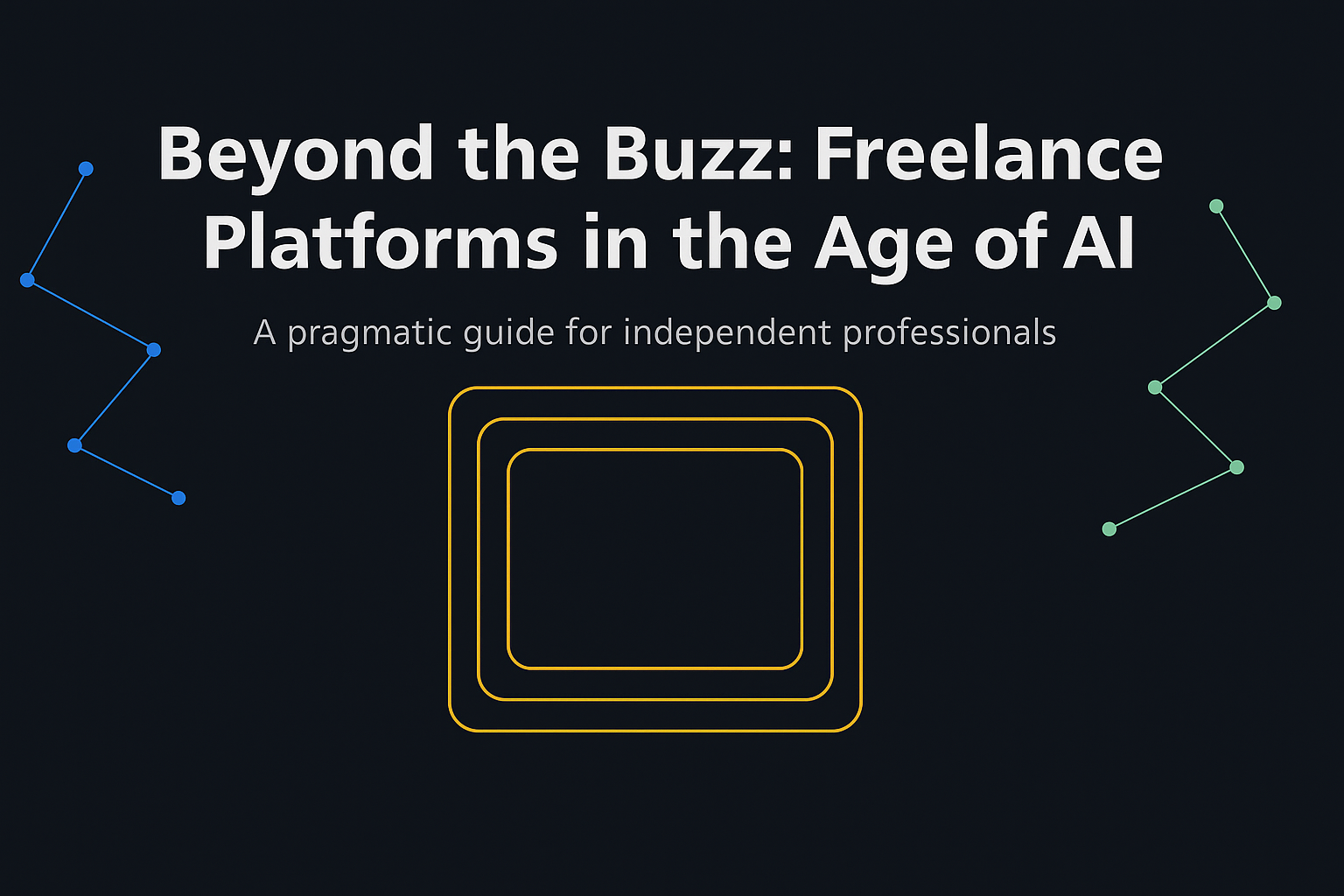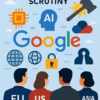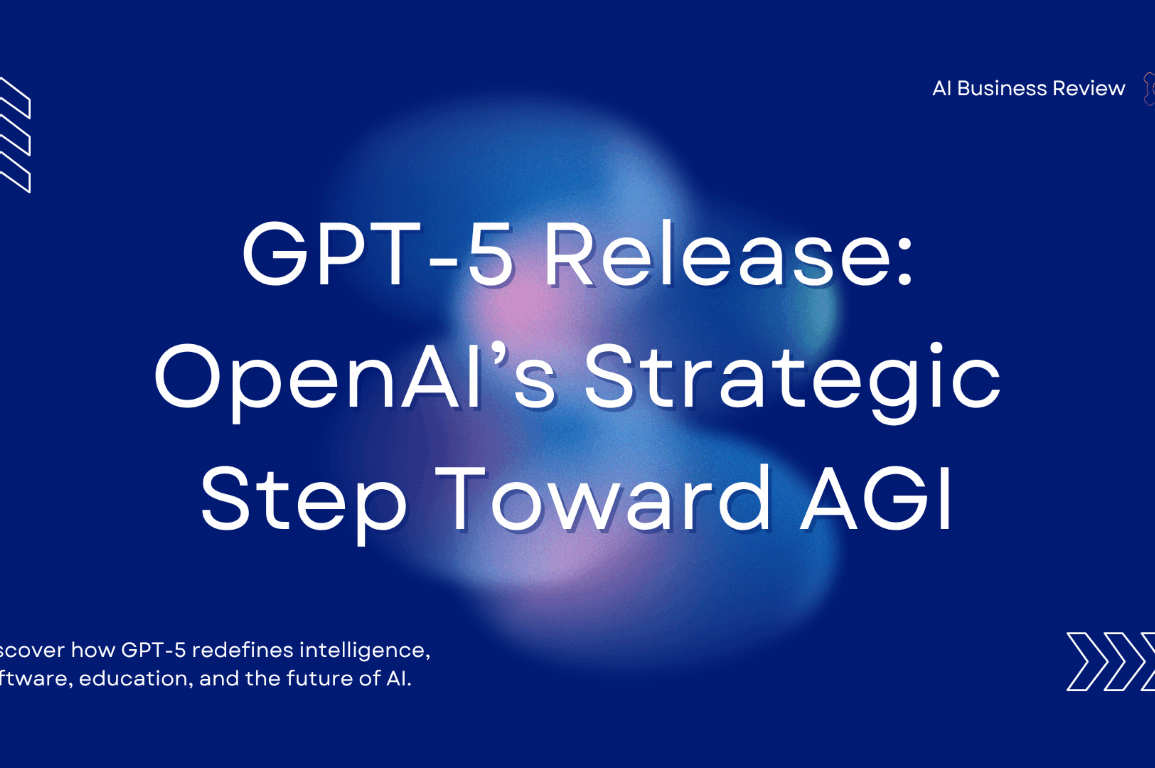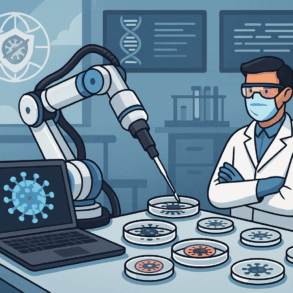“GPT-3 felt like high school. GPT-4, a college student. GPT-5? Now you’re talking to a PhD.”
— Sam Altman, CEO, OpenAI
The GPT-5 release OpenAI AGI community has anticipated for months is finally here. On November 30, 2022, OpenAI released ChatGPT. It wasn’t just a product launch—it was a cultural flashpoint that brought generative AI into the public imagination. Now, 32 months later, OpenAI is staging a sequel. But this time, it isn’t just a chatbot. It’s a strategic step in OpenAI’s broader move toward Artificial General Intelligence (AGI).

The GPT-5 release by OpenAI marks a new chapter in its journey toward advanced AI systems. GPT-5 doesn’t just answer faster or more accurately. It reasons. It chooses how to respond. And it does all this while actively reducing hallucinations, sycophancy, and misleading certainty. In short, it doesn’t just think better—it knows when to think harder.
Courtesy: OpenAI.com
Invisible Intelligence: The End of Model Switching in the GPT-5 Release and OpenAI’s Long-Term AGI Strategy
OpenAI has introduced a model-routing system that automatically determines whether a query requires a fast response or deeper reasoning. This “reasoning router” operates behind the scenes, choosing between base GPT-5, GPT-5 Thinking, or GPT-5 Pro—the most capable variant yet.
This shift ends the era of model selection. Users no longer choose between GPT-4 or GPT-4o or o3. They simply ask a question, and the system routes intelligently.
For the user, the model disappears. The experience becomes seamless. In doing so, OpenAI has brought AI closer to infrastructure than application.
Why Give GPT-5 Away for Free? Understanding OpenAI’s Step Toward AGI
OpenAI’s decision to release GPT-5 to all signed-in users—including those on the free tier—isn’t just about access. It’s a platform play. By making GPT-5 the default experience for the widest possible audience, OpenAI is solidifying its position as the cognitive baseline of modern life.
In a world where intelligence is productized, being the default thinking engine is the most valuable real estate in tech. The GPT-5 release reflects a calculated move—one that aligns with OpenAI’s stated AGI roadmap, without claiming to have arrived there yet.
PhD-Level Expertise in Your Pocket with GPT-5
OpenAI claims GPT-5 demonstrates PhD-level performance in key domains:
- Math: 94.6% on AIME 2025
- Coding: 88% on Aider Polyglot
- Multimodal understanding: 84.2% on MMMU
- Health reasoning: 46.2% on HealthBench Hard
But beyond benchmarks, GPT-5 shows qualitative advances in writing, structural reasoning, and health advice. It adapts tone, context, and specificity better than any of its predecessors.
Whether designing a pitch deck, framing clinical questions, or refactoring a legacy codebase, GPT-5 handles complex tasks in a single prompt.
More Honest, Less Overconfident: GPT-5’s Responsible AI Framework
Unlike earlier models, GPT-5 has been trained not just to comply, but to communicate limits. With a reduction in deceptive or overconfident outputs, it’s less likely to hallucinate facts or mislead by implication.
This is reinforced by a new “safe completions” paradigm—designed to handle ethically ambiguous prompts not with refusal, but with safe, partial, or redirected answers.
This is not just a technical improvement. It’s a philosophical one. OpenAI is engineering honesty into the default mode of AI.
The Disruption Loop Resets Across Industries
GPT-5 isn’t just a milestone in model performance. It resets the disruption cycle across entire industries:
- Education: When every student has a tutor smarter than most teachers, what is a curriculum?
- Software: When AI can generate full front-ends in a prompt, what is a junior developer?
- Healthcare: When a model asks better triage questions than many intake forms, what is the new patient journey?
As GPT-5 quietly replaces the need for specialized interfaces, content pipelines, and even ideation tools, it forces every knowledge-based field to reconsider its assumptions.
From Product to Platform to Partner: How GPT-5 Repositions OpenAI
The original ChatGPT was a product. GPT-4o was a platform. But GPT-5 is something else entirely. It partners with the user. It decides when to slow down. It calibrates confidence. It adapts to tone and domain.
This is the closest we’ve come to AI that not only “knows things” but knows how to think.
Conclusion: GPT-5 Release Marks a Step Toward, Not Arrival at, AGI
The GPT-5 release marks OpenAI’s clearest strategic step toward AGI to date. While GPT-5 is not Artificial General Intelligence itself, it represents meaningful progress along the roadmap OpenAI has drawn publicly—and positions the company to shape the path forward.
And because GPT-5 is becoming the new default—across free, Plus, Pro, Team, and soon Enterprise tiers—OpenAI isn’t just releasing a smarter model. It’s building the mental infrastructure for the digital age.
GPT-5 doesn’t replace human thinking. It reframes what we expect from it.
External Link: OpenAI’s Official GPT-5 Release
Further reading: Explore how the AI revolution is broadly transforming businesses and economies in our featured analysis: “AI Revolution – Transforming Businesses and Economies”.








